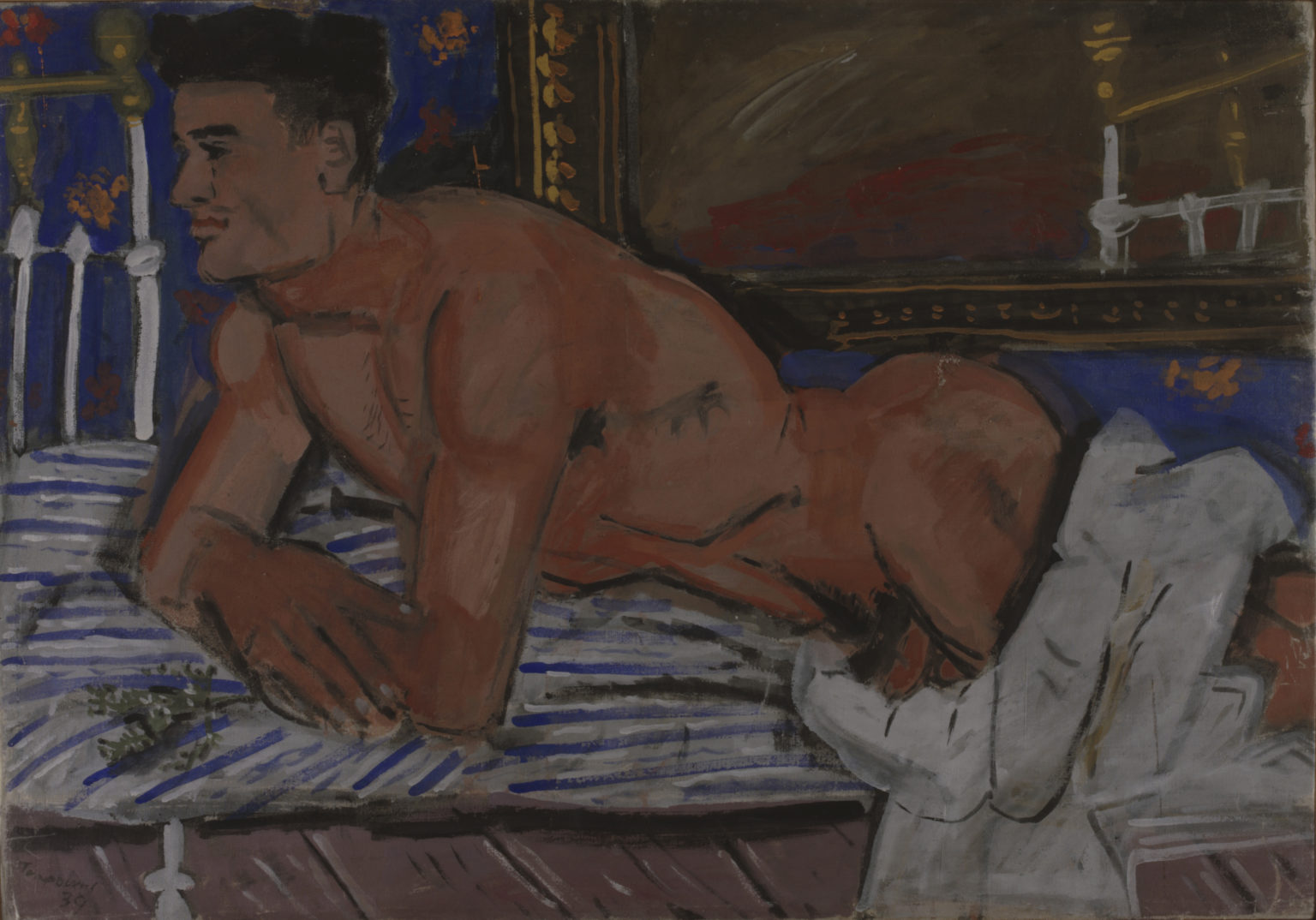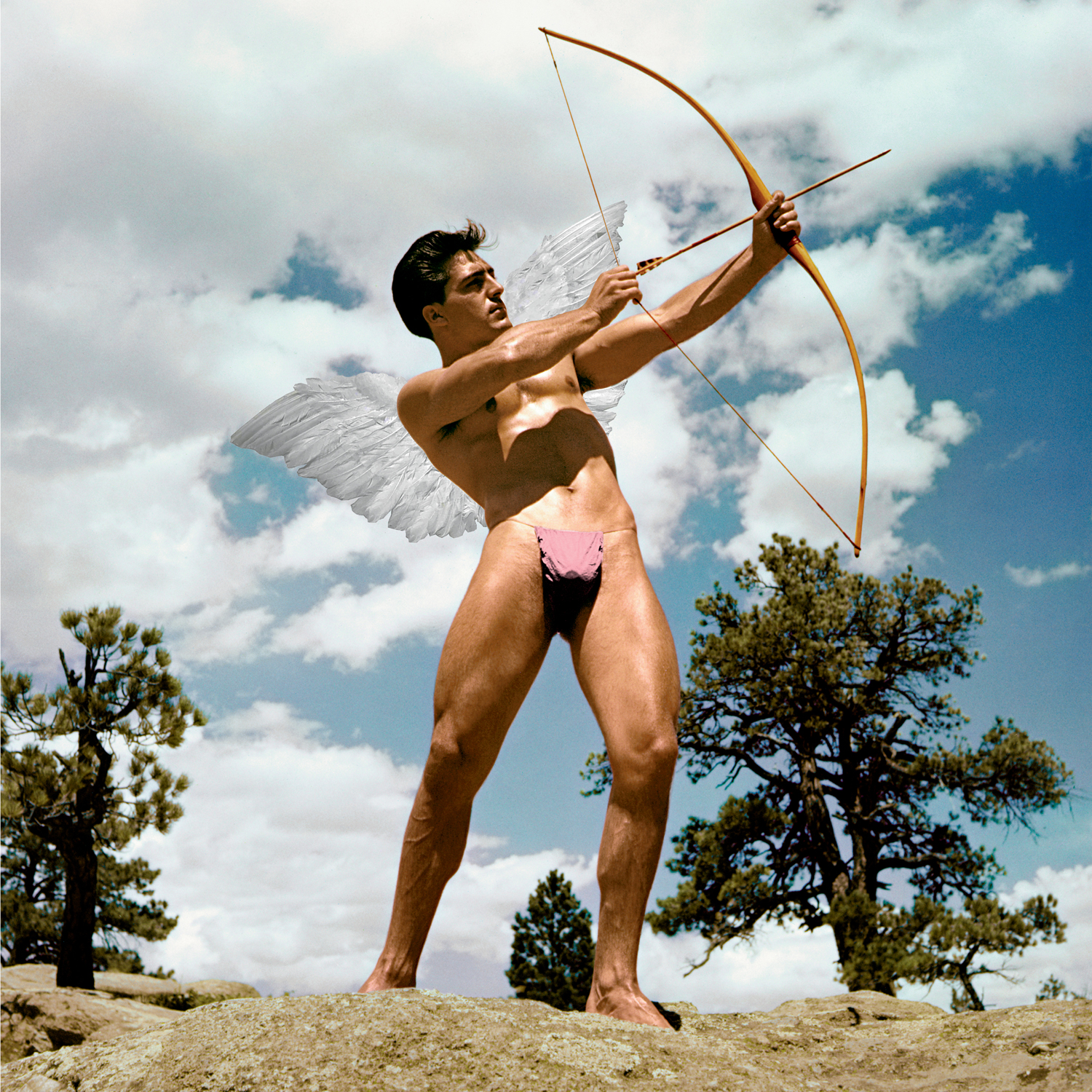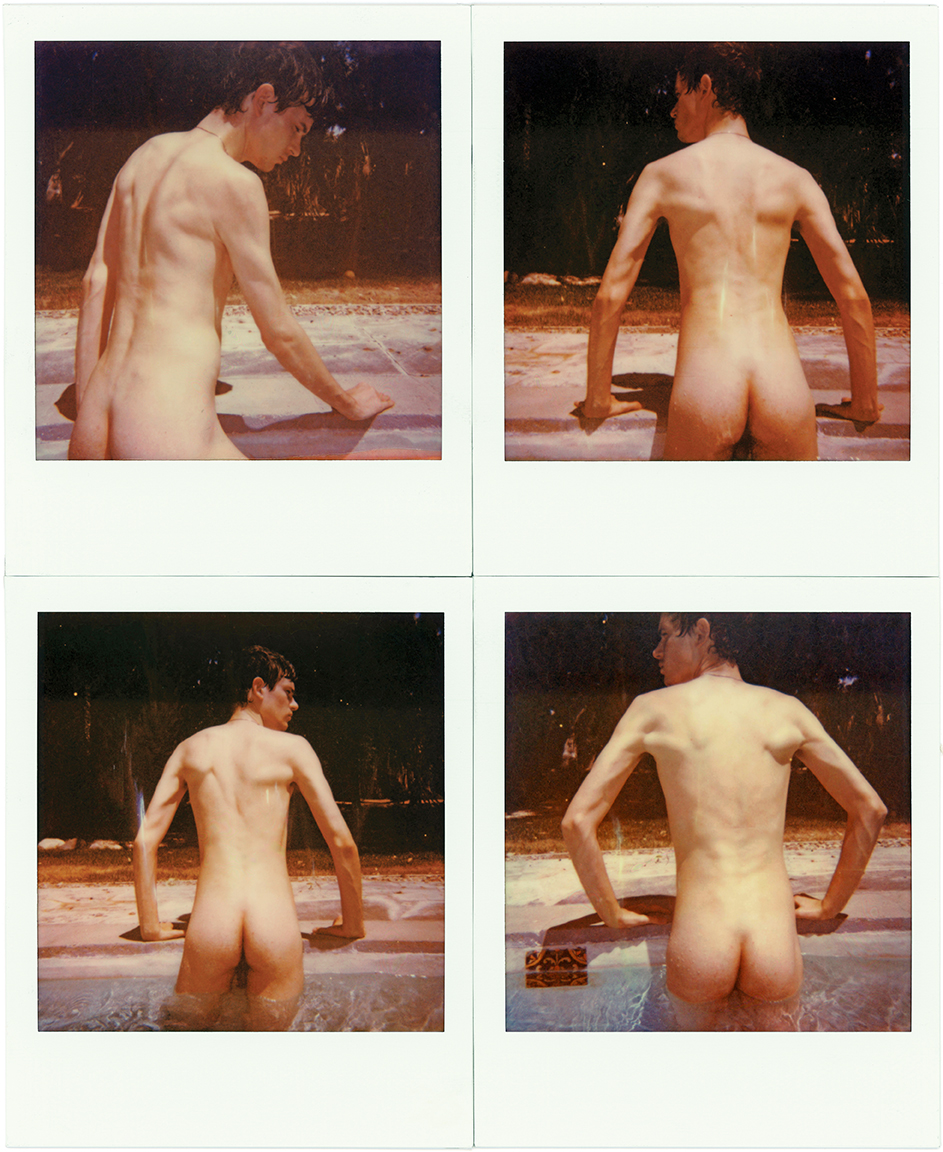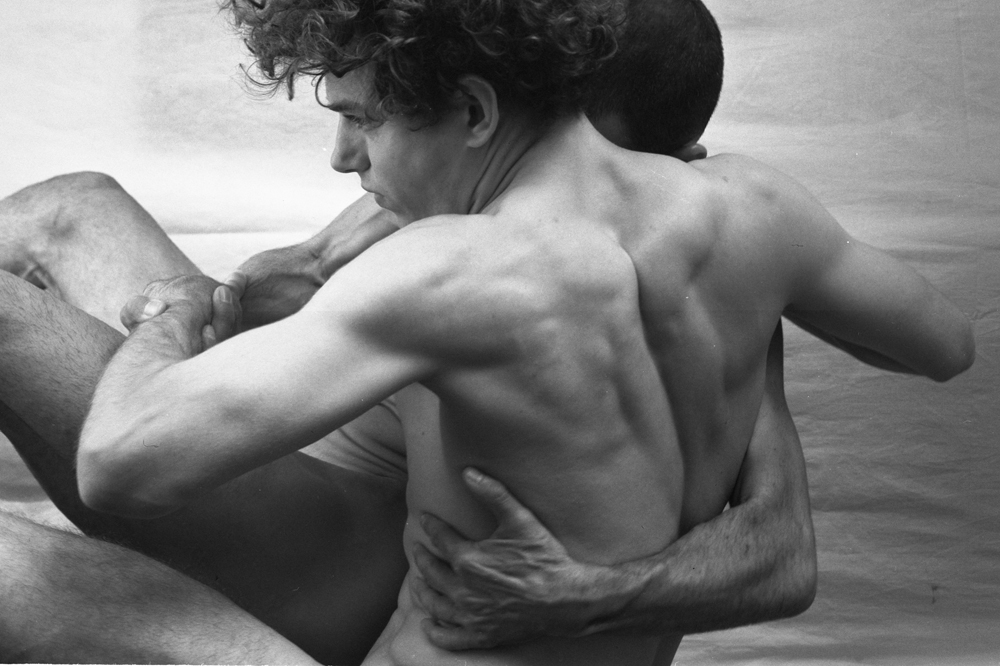Wednesday 03.17.21
IAN FADEN
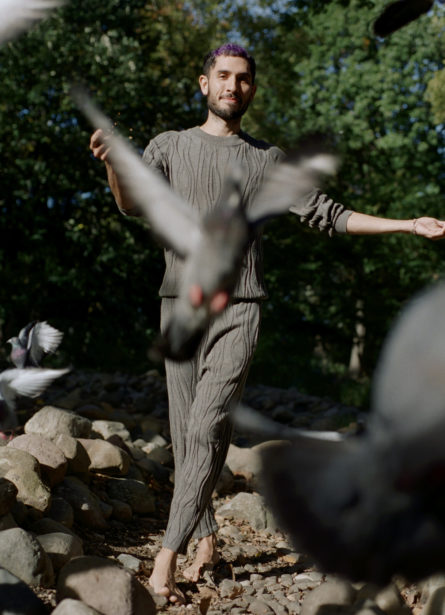
Ian Faden’s passion for bird watching has informed his painting, and vice versa. He obsesses over feather colorations and beak shapes with the same ardor he might describe the opacities and hues of a particular oil paint. Originally from Massachusetts, he attended Pratt Institute in Brooklyn and now lives and works in Bushwick. His recent paintings and drawings in two series, titled Tales, Tails, Tales & Tails and Fables for the Future, provide glimpses into a world that could be seen as post-apocalyptic or post-human, but might be better understood as post-anthropocentric. In this dimension, humans and animals have experienced a great leveling of power, all naked and attempting to survive, often on equal footing and in direct competition with one another. Instead of following a specific narrative, the work evokes a series of dream-like scenes and loose mythologies that build to form a larger paradigm in which all living beings are but creatures — people are animalistic and animals are personified — both fending for themselves amid tremendous scarcity.
Is the crow smarter than the mourning dove? The shifting hierarchy of intelligence and self-awareness is a running theme in Faden’s work. In Yes Court, a mourning dove stands before their own reflection in a cracked mirror held up by a few watchful crows. However, it is difficult to decipher whether the mirror is broken because the bird has foolishly pecked at their own self-image or if Faden has included the crack as a symbol of the bird’s moody interior mental state. …

Tuesday 03.02.21
Bruce LaBruce: The Death Book
He is a provocateur extraordinaire – most of his oeuvre has been banned, censored, or attacked since he emerged from the queer punk scene in the 1980s.
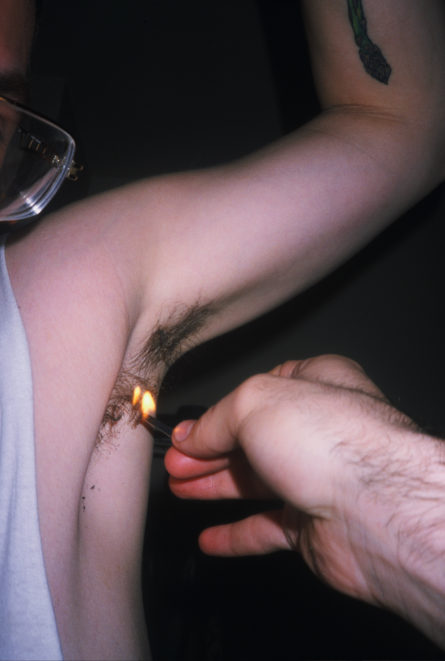
The Death Book continues his subversive project, with the images in the book functioning as a social mirror or projective test that mine our collective unconscious, probing the depths of what we repress and censor. Just a few days shy of the United States Presidential 2020 election, Bruce and I connected on Skype to discuss his newest book. It was a gloomy day in both Brooklyn and Toronto, a fitting backdrop for our conversation which delved into death, violence, obscenity, and the psychology of taboo.
Could you tell me about the concept for the book? Baron Books, Matthew Holroyd, contacted me. He had this concept to do a series of books on death, and ask various artists to collaborate on the concept. So mine is only the second book in the series. He let me come up with whatever idea I thought would be most interesting. And I guess I took it beyond that — literally. Like, I thought it would be a good opportunity to compile all the most severely violent and crazy imagery that I’ve made over the years. It kind of has a cumulative effect. I’ve been working in gore and splatter for quite a long time. Even before my zombie movies, I was using a lot of it in my photography and at my art openings. So when you see it all together, it’s kind of startling, but I think it’s all very consistent and it really shows how my project has always been to draw attention to how this kind of imagery is so casually promoted as capitalist fodder. …

Friday 02.19.21
Burn Across the Breeze
New paintings from the figurative talent Anthony Cudahy
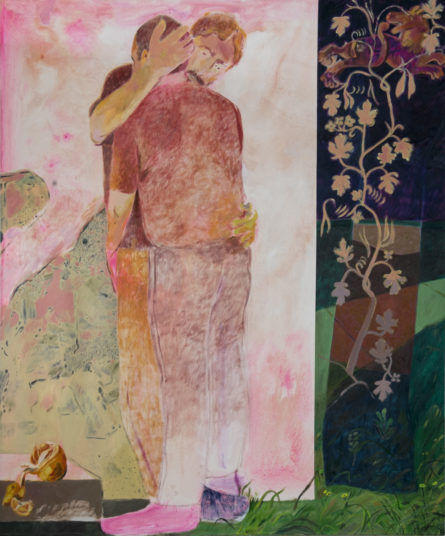
When New York City first went into lockdown, Cudahy was unable to access his studio where large-scale works were in progress, but 2020 was still a prolific year for him, creatively speaking. Stuck at home, the painter turned inward, focusing on his late uncle Kenny Gardner’s photography archive (brilliantly curated) as well as his own stockpile of imagery that inspired several new drawings and paintings for his show Burn Across the Breeze at 1969 Gallery, on view through February 21st.
Anthony Cudahy is a great storyteller. Despite their otherworldly subject matter, his paintings occlude simplification. They’re rarely about one thing. Even a traditional portrait accrues context under Cudahy’s guidance. His scenes — which make use of saturated oranges, greens and purples — are often usurped from found imagery, or borrow directly from art history.
One of the show’s more quiet works was painted right after the toughest lockdown restrictions were lifted, when Cudahy could return to the studio, where he was no longer confined to small format. “Us (with Jacob’s Ladder, Apocalypse Tree, Lion)” shows two figures, Cudahy and his husband, Ian Lewandowski, embracing in an indiscernible setting that blends the natural world with something more sinister. Portrayed in breathy strokes of reds and orange, Cudahy and Lewandowksi embrace in the foreground on top of lush green grass that turns murky under the apocalypse tree. In the background, a path in harsh light leads the eye off the canvas, away from the safety of their embrace. I focused on the two figures at first glance, drawn to the delicate brushstrokes that didn’t carry too much paint. …

Sunday 01.17.21
GERARDO VIZMANOS
In the photographer’s latest book 'Things I Do When I’m at Home,' Gerardo Vizmanos documents his time in quarantine and steps in front of his camera for the first time.
Monday 12.28.20
Anthony Peyton Young
By making portraits of trans and non-binary people in memoriam, the Boston-based artist faces the challenges of representation.
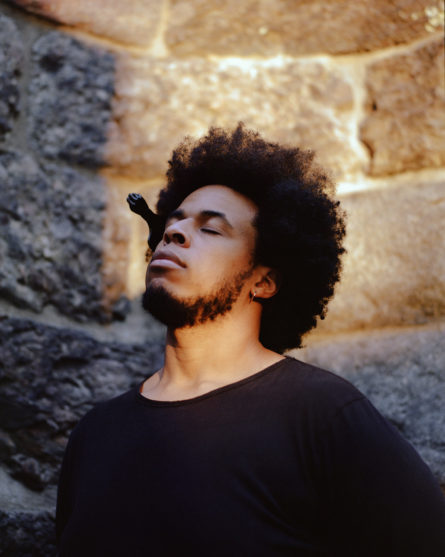
How do you represent a person who is no longer here? How do you humanize someone who has already been dehumanized? George Floyd’s murder, along with so many others before and since, has become a lightning rod for this discussion. Should images of police brutality and its victims be circulated to demand systemic change by spreading awareness or do these images desensitize us to horrific violence, making a spectacle of Black death? Since the beginning of 2020, at least 40 transgender and gender-nonconforming people were fatally shot or killed by other violent means, the majority Black and Latinx transgender women. Representing these individuals has its own politics of optics; often the media uses the last photograph taken or whatever pictures their family allows for publication. But the memory of someone does not exist in a snapshot, or to be more clear, a photo is maybe best used more for rejogging the recollections of those who actually knew the person rather than providing real, substantial context for a life. Perhaps portraiture offers an opportunity to better render the complexity and the humanity of those whose lives ended tragically, but who were so much more than just victims.
Artist Anthony Peyton Young’s ongoing project Say Their Names memorializes Black lives through prismatic fragmented collaged portraits. His series started representing individuals taken by police brutality, but it’s since expanded to include all different Black lives, including transgender and gender-nonconforming people of color who have been the victims of hate crimes. While Anthony believes positive queer role models and images of transgender women as powerful, prosperous, and glamorous are important, he also demands we do not ignore the dark reality of the continuous violence against Black bodies. …

Tuesday 12.01.20
David Dreams in Poetry
Remembering David Wojnarowicz, his search for some sort of grace, and why Everything He Made, He Made For Peter Hujar.
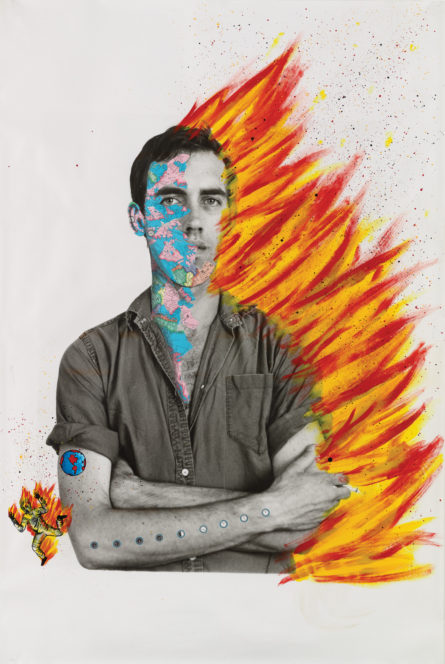
David Wojnarowicz had already lost so much to AIDS. But there was no bigger loss than Peter Hujar. So the day he lost Peter — November 26, 1987 — David asked their friends to leave the hospital room, to guard the door and not let the nurses in.
David got out his camera and took 23 photos, one for each pair of chromosomes in a human cell. He took a picture of Peter’s lifeless face, lips parted, eyes still wet; a picture of Peter’s open hand; a picture of Peter’s feet and toes. Like almost all of David’s photos, these 23 are black and white. We aren’t privy to Peter’s discolorations and wan skin, nor his pain and humiliation.
He wanted to offer some words in memory of his friend and mentor, his closest companion, but David — a poet prone to fiery, righteous rants — was speechless. “Nothing came from my mouth,” David wrote in his journal. “[A]ll I can do is raise my hands from my sides in helplessness and say, ‘All I want is some sort of grace.’ ”
After his own HIV diagnosis, in 1988, David would collage these photos into a painting, Untitled (Hujar Dead). Over the collage he printed a passionate paragraph condemning deathly homophobia and describing life with HIV: “I’m waking up more and more from daydreams of tipping amazonian blowdarts in ‘infected blood’ and spitting them at the exposed necklines of certain politicians or government healthcare officials.” It wouldn’t be the last time David threatened public officials. …

Thursday 11.12.20
The Wedgie Is The Work: Between The Cheeks with Benjamin Fredrickson
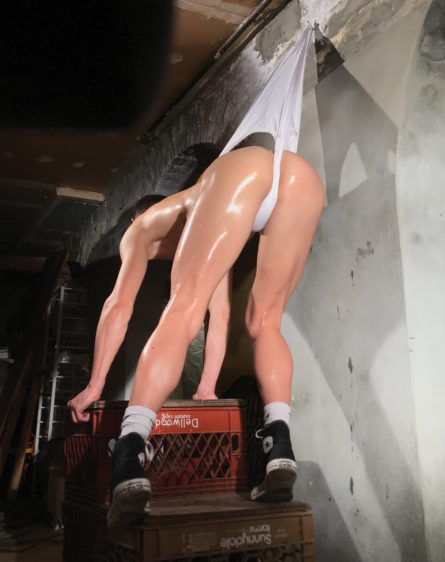
Straddling the line between abstract and erotic, New York City-based photographer Benjamin Fredrickson’s wedgie portraits have quickly garnered acclaim, each featuring glistening globes split by taut stretched fabric.
Benjamin, originally from Minnesota, became interested in photography as a teenager, and moved to New York City over a decade ago. His photographs are often very personal, and self-portraiture makes up a large part of his oeuvre. He says that photography has been a way for him to break out of his shell, exploring his own body and sexuality. We spoke about his process, his inspirations, and beautiful butts.
What pulled you to photograph wedgies? I was making work for a different project and while a model was shifting his underwear he accidentally created a wedgie. His skin was already lathered in oil and had a nice glisten to it, and he had the perfect wedgie butt. The tension created by the pull of the underwear caressed and spread his butt cheeks in such a way that really turned me on. I liked the idea of something being so sexual without it being explicitly pornographic. The wedgie leaves something to the imagination. You know that there is a butthole under the fabric just waiting to be pulled aside and exposed, but it’s not. It remains covered. Since that day, I’ve been a wedgie enthusiast.
I’m fascinated by the contraptions that pull the underwear in your photos. Why did you decide to use these instead of hands? I created them as a creative way to make a wedgie pull without having to use hands directly. …

